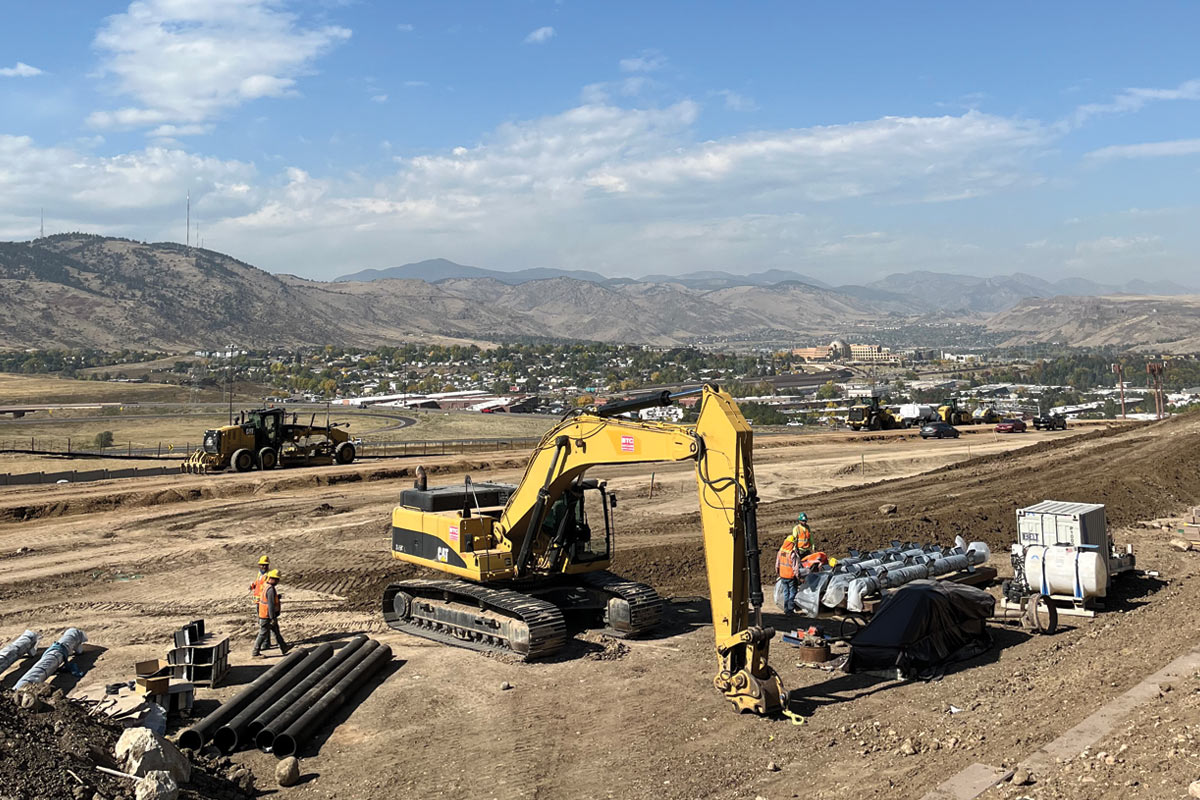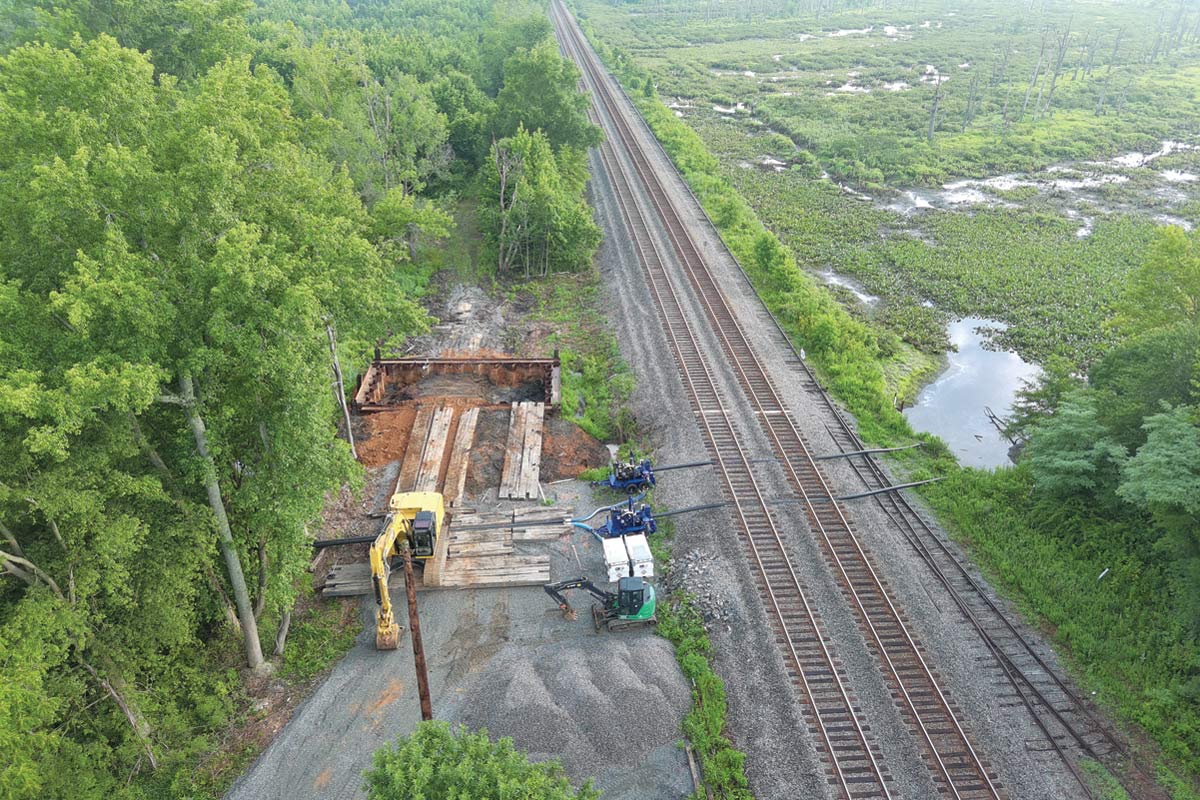
Auger Boring for Utah DOT’s US-89 Expansion Project
In May 2020, BTrenchless started constructing and installing nine tunnels for the Oak Hills Constructors group as part of the Utah Department of Transportation’s new US-89 Highway expansion project.
Oak Hills Constructors represents a joint venture of both Granite Construction and RL Wadsworth Construction. The project’s initial overall value was $380 million and is currently being delivered in an alternative delivery, or design-build, method of contract. As the design efforts evolved, more than 30 different trenchless crossings were identified as part of the utility relocation effort. With an aggressive schedule planned, BTrenchless was the third tunneling subcontractor brought onto the US-89 site working side-by-side with a two other tunneling firms in the Wasatch Front Range.
Before looking at the details of this project, first a quick history lesson on BTrenchless. A Colorado-based company in business since 1980, the parent company, BT Construction, has built a strong reputation of safely installing some of the most challenging work in the western United States. BTrenchless is the tunneling division of the company and has become one of the most respected contractors in the Rocky Mountain Region, specializing in underground trenchless technologies. The foundation of the company rests on six core values: Safety, Integrity, Excellence, Fun, Determination and Community. The team can handle nearly any underground trenchless project with an array of tunneling methods including auger boring, guided boring, hand tunneling, pipe ramming, microtunneling, tunnel boring, pipe-bursting, sliplining and hydrovac excavation.

On a typical design-bid-build contract, it is very common for the tunneling contractor to be provided with limited soils information, a geotechnical data report (GDR), or even a more sophisticated project specific geotechnical baseline report (GBR). On US-89, the quick pace of the design for each crossing did not allow for that sort of robust upfront geotechnical engineering work. The decision was made to attempt a pilot tube installation prior to all steel casing installations to proof the alignment for the crossing. If the pilot tube was successful, it indicated a higher probability of success for installing the 20- to 42-in. diameter casings. Of the initial nine tunnels, BTrenchless was under contract for, eight of them would be intended to be built with a guided auger boring method. The remaining crossing was a 42-in. diameter casing and was bid and built with an OTS/McLaughlin; a single-pass guided auger boring method.
The original nine tunnels consisted of 1,748 lf of 20-in. casing, 288 lf of 30-in. casing, and 226 lf of 42-in. casing to be constructed in succession. Utilizing an Akkerman Guided Boring Machine to install an initial 5-in. diameter pilot tube, the first three completed drives went according to plan with 20-in. installations of 243 lf and 288 lf, and a 30-in. install of 288 lf. The laser guided target behind the pilot tube steering head enabled extremely accurate installations for the water and sanitary sewer utilities. The fourth drive was a 42-in. diameter, 226-lf installation and was installed with a 42-in. OTS (On Target System) fabricated by McLaughlin. The understanding of the soil in the area based on the recently completed tunnels gave the team the confidence it needed to construct this fourth tunnel with this single pass method.
As time passed on the project, the BTrenchless crew continued to be professional with attention to detail, ability to overcome challenges in the field, and an extremely high level of safety. Regular UDOT safety audits became a welcome, routine aspect of the approach to the project. This consistent adherence to high standards of excellence prompted Oak Hills Constructors to request additional trenchless crossings on the project. Those original nine tunnel scope has now grown to 14 and counting.
With eight tunnels completed on the job, the team’s true test was still ahead of us. The northern half of the project had two tunnels near East Antelope Drive, situated at the base of one of the tallest mountains in the Wasatch Front Range, Thurston Peak. As other contractors began working in this area, it became evident that the team may have to re-think our guided auger bore method. Large rocks and boulders were present in the subgrade, and excavation revealed a few boulders larger than a small Volkswagen. A water and sanitary sewer line had to be installed underneath the active US-89 highway for Layton City. To complicate things even further, a critical piece of infrastructure, the 50-year-old, 78-in. diameter, 23-mile long Davis Aqueduct the carries water from Weber Canyon to North Salt Lake City would need to be crossed underneath. This extremely valuable water supply pipeline needed to remain protected in place and the Bureau of Reclamation (BOR) was going to weigh in on the tunneling plan.

Following a hydrovac and test pit operation to determine the viability of a trenchless crossing for the Layton City water and sanitary sewer lines, it was clear that the pilot tube method may not be feasible. Of considerable concern was the 50-year-old Davis Aqueduct, and the effect excessive vibration would have on it when tunneling beneath it. This prompted the BTrenchless team to recommend upsizing the 20-in. casing to 42-in. diameter and switch to a hand tunneling method. The increased casing diameter allowed for safe working room at the front of the tunnel to hand mine through the anticipated underground field of large rocks and boulders. Hand tunneling has slower production rates and has higher safety concerns due to the crew actively working at the front of the tunnel, but if done properly, it has an extremely high level of accuracy combined with low levels of vibration for nearby critical utilities. This methodology gave both Oak Hills Constructors and the BOR engineers the confidence that the BTrenchless team would be successful.
As this article goes to print, BTrenchless has completed the first of the two planned hand tunnels underneath both US-89 and the Davis Aqueduct. Changing methods and adapting to the geotechnical conditions of the site took some additional planning, but will accomplish the goal of installing two of the more challenging trenchless crossings on the project safely. The team looks forward to completing the remaining scope of our contract in the summer and fall of 2021 to help the US-89 project finish ahead of schedule.
John Beckos is senior project manager and estimator at BTrenchless, a division of BT Construction.




